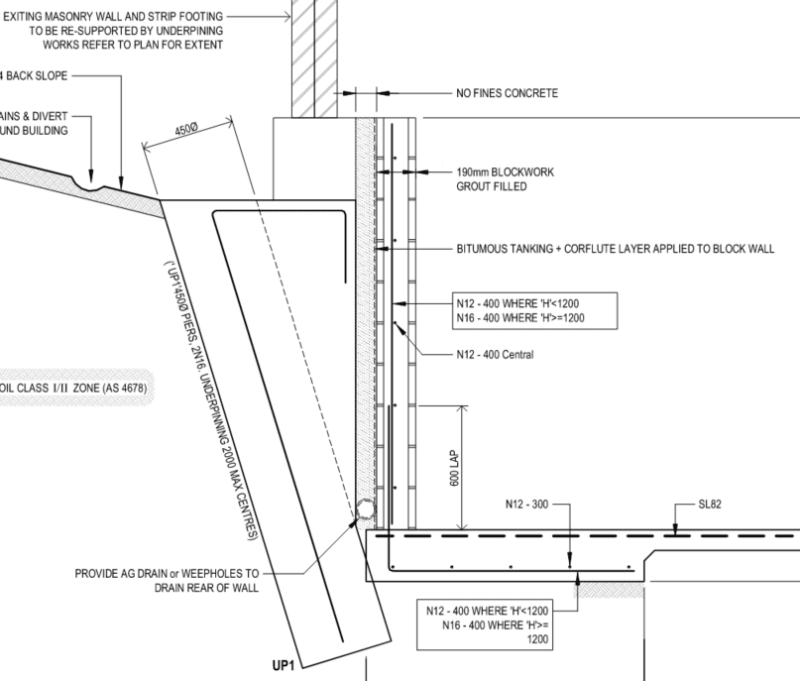mfstructural
Structural
I'm curious to get people's thoughts on this underpinning detail. I had an architect question why I'm cutting off the existing footing at the inside to extend the new concrete foundation wall up along the inside of the wall. First he asked how are they going to do that? I have personally seen one sided chop saws so I don't think it's a big deal to cut that off. I like the idea of having the new wall extend up the inside as it aids reducing moisture intrusion and also takes out some of the flexure in the wall. In essence, it functions like a retaining wall. Would you recommend having a footing/toe at the inside that extends below the slab?




![[upsidedown] [upsidedown] [upsidedown]](/data/assets/smilies/upsidedown.gif)